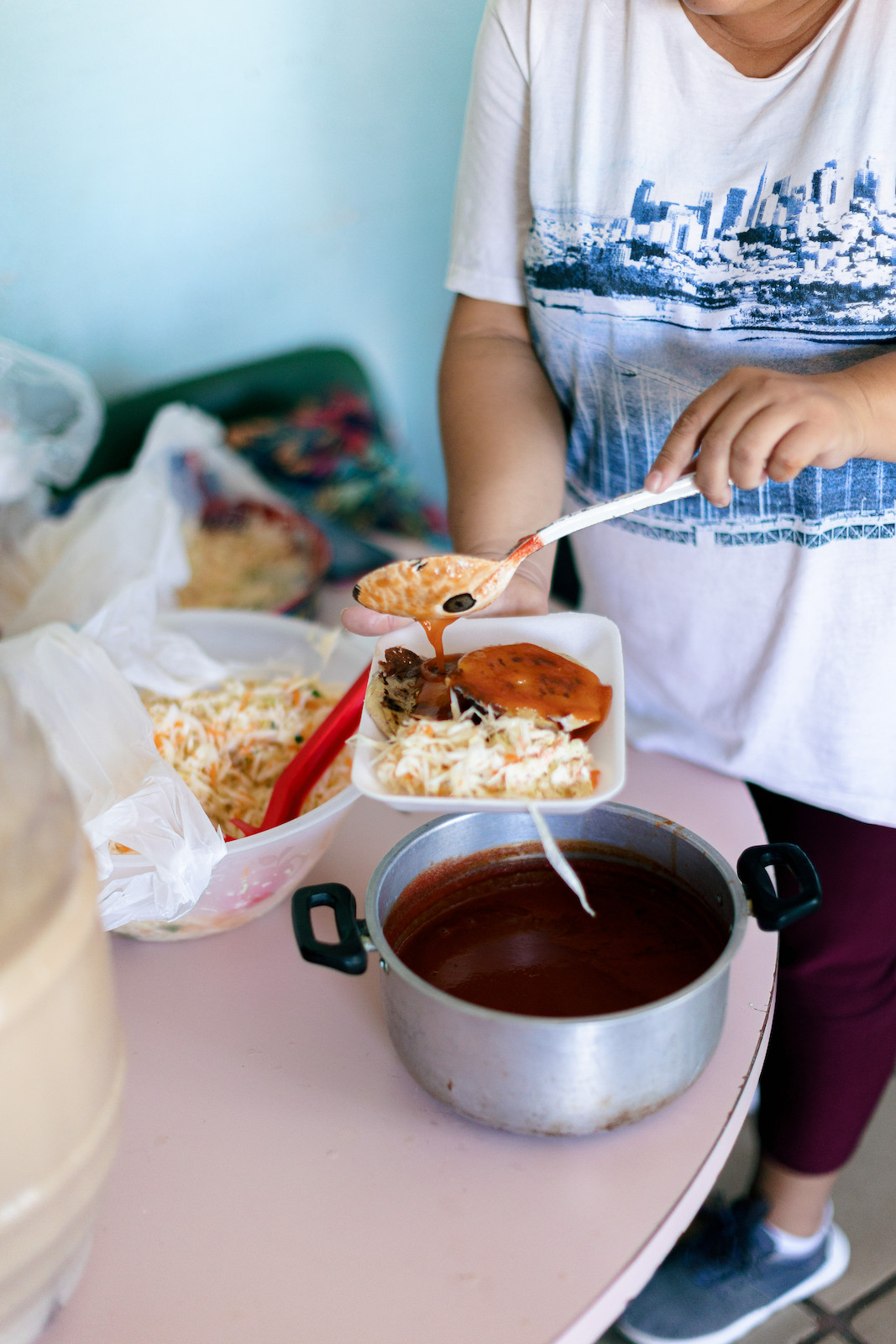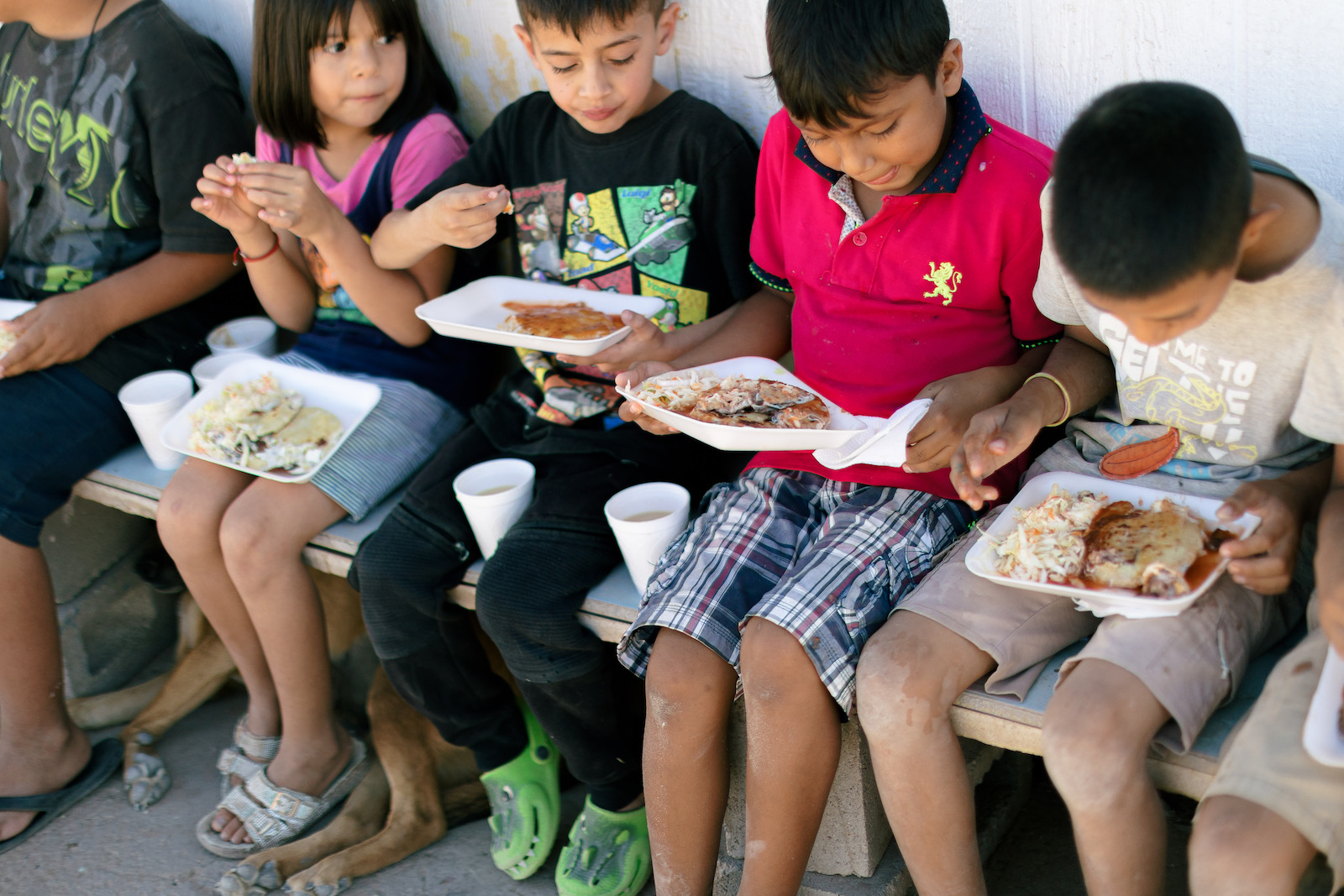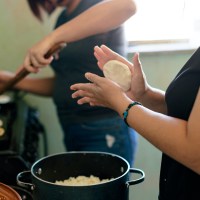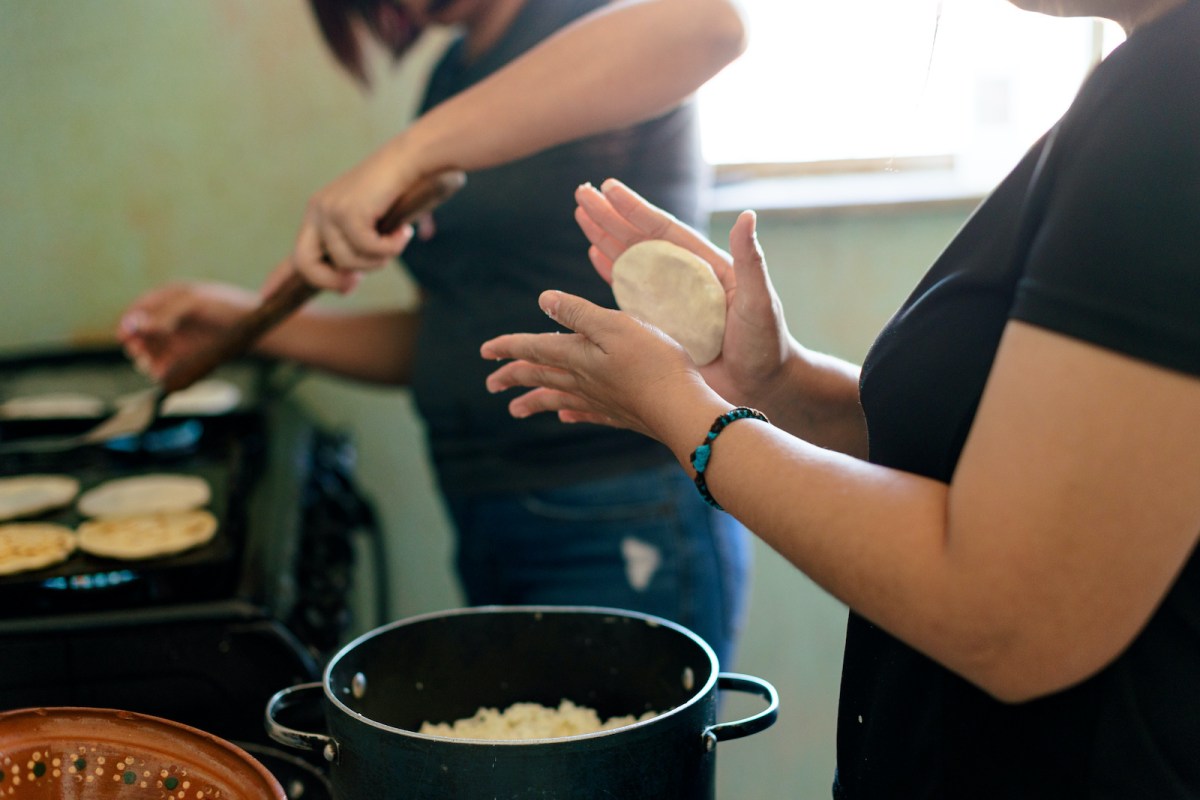Freshly-baked bread, drizzled with butter. Homemade brownies, cooling on a countertop. Chicken soup bubbling on the stove while your fever rises and the outside temperature falls. With one mighty inhale, certain food smells transport us to the places we hold dear. When you’re displaced from your community due to poverty or violence, cooking a traditional meal is sometimes the only way to conjure home. In a shelter we support, our El Salvadoran friends make pupusa, connecting through a hearth to their homeland.
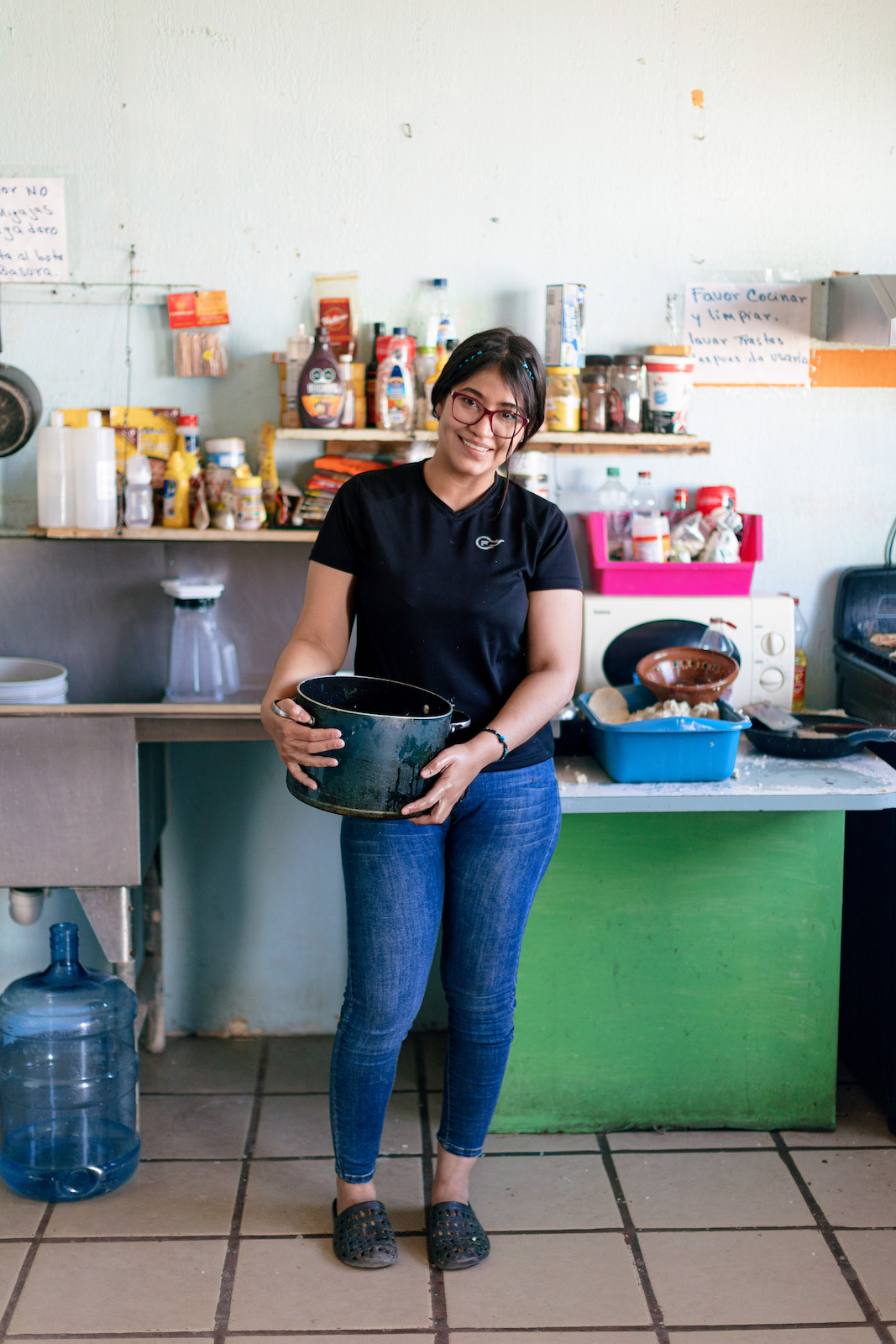
What’s a Pupusa?
Picture a round, gold-tinged, tortilla-like flatbread, filled with deliciousness. Originated by the Pipil tribe, indigenous to El Salvador, pupusas have satisfied hunger for over 2000 years. These thick griddle cakes made with cornmeal or rice flour are stuffed with one or more savory ingredients such as cheese, squash blossoms, mushrooms, or refried beans, and served with curtido, a spicy, fermented cabbage slaw, and tomato salsa. During colonization in the 1500s, meat such as pork became a filling option. Today, the pupusa is El Salvador’s national dish and is celebrated on National Pupusa Day, on the second Sunday in November.
We Eat Pupusa with our Hands
Pre-hispanic belief taught that cutting tortillas with a knife was sinful because corn was a divine grain, but using your fingers was okay. Perhaps that is why most people eat pupusa with their hands. When Salvadorans fled their communities during the 1980s civil war, they brought pupusas to the rest of the world. In 2011, The Guardian newspaper named pupusas the best street food in New York City.
Try This at Home
The largest pupusa ever made is almost 14 feet in diameter. If you can beat that record, tag us on Instagram. In the meantime, here’s an easy-to-follow recipe to make your own delicious goodness at home. Below, watch Preemptive Love’s Kalindi make pupusas with our migrant friends in a shelter we support near the US – Mexico border.
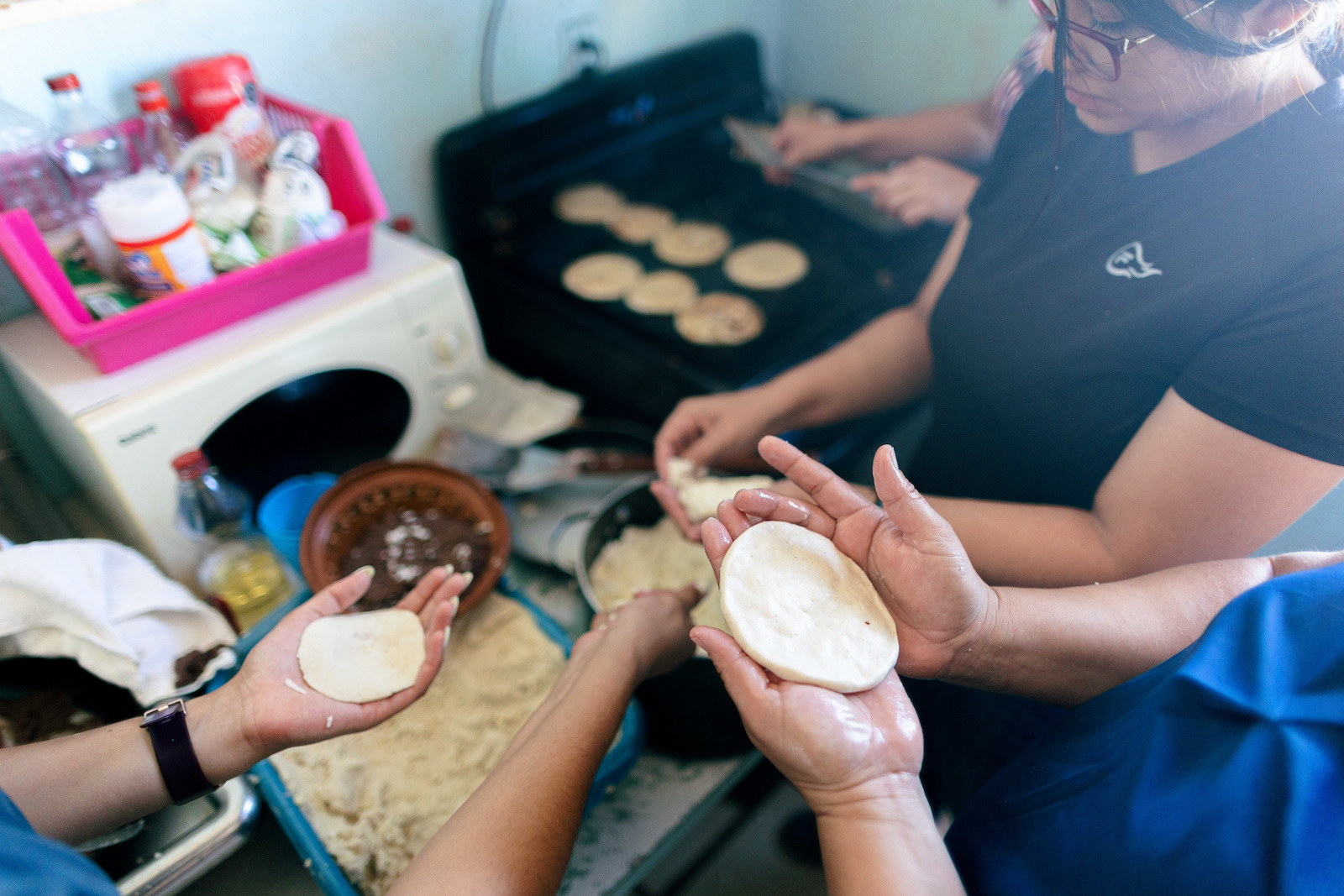
Pupusas Salvadoreñas
Ingredients
For the Corn Dough (masa):
- 500 gr of corn flour (or 1.10 lb)
- 1½ cups of water (360 milliliters)
For the filling of refried beans & cheese:
- 250 gr of cooked black beans (or 8.8 oz)
- 1 small piece of onion
- 1 clove of garlic
- 2 tablespoons of oil (or lard/manteca)
- 200 gr of mozzarella cheese; it can also be done with Oaxaca cheese ( or 7.05 oz)
For the pickled (curtido) cabbage WITH mayonnaise:
- 1 tablespoon of mustard
- 3 tablespoons of mayonnaise
- ½ cabbage, chopped
- 1 carrot, chopped
- ½ onion, thinly sliced
- Salt as needed
For the salsa:
- 1 can of tomato sauce with chunks (250 gr or 8.8 oz)
- 1 or 2 green chilies (depending on how spicy you like)
- 1 piece of onion
- 1 tablespoon of olive oil
- 250 ml of water (or 8.4 oz)
- 3 garlic cloves
- 1 pinch of salt or knorr suiza
- 1 pinch of oregano
- 1 pinch of pepper
Ready, Set, Cook!
- Begin by preparing the refried beans. First, place a pan with a bit of oil/lard and fry the onion and garlic clove until golden brown. Then, blend together with the cooked beans for a few minutes until you get a smooth paste.
In a pot or pan with the oil left over from frying the onion and garlic, pour the blended beans and constantly stir, until reduced and a firmer paste remains.
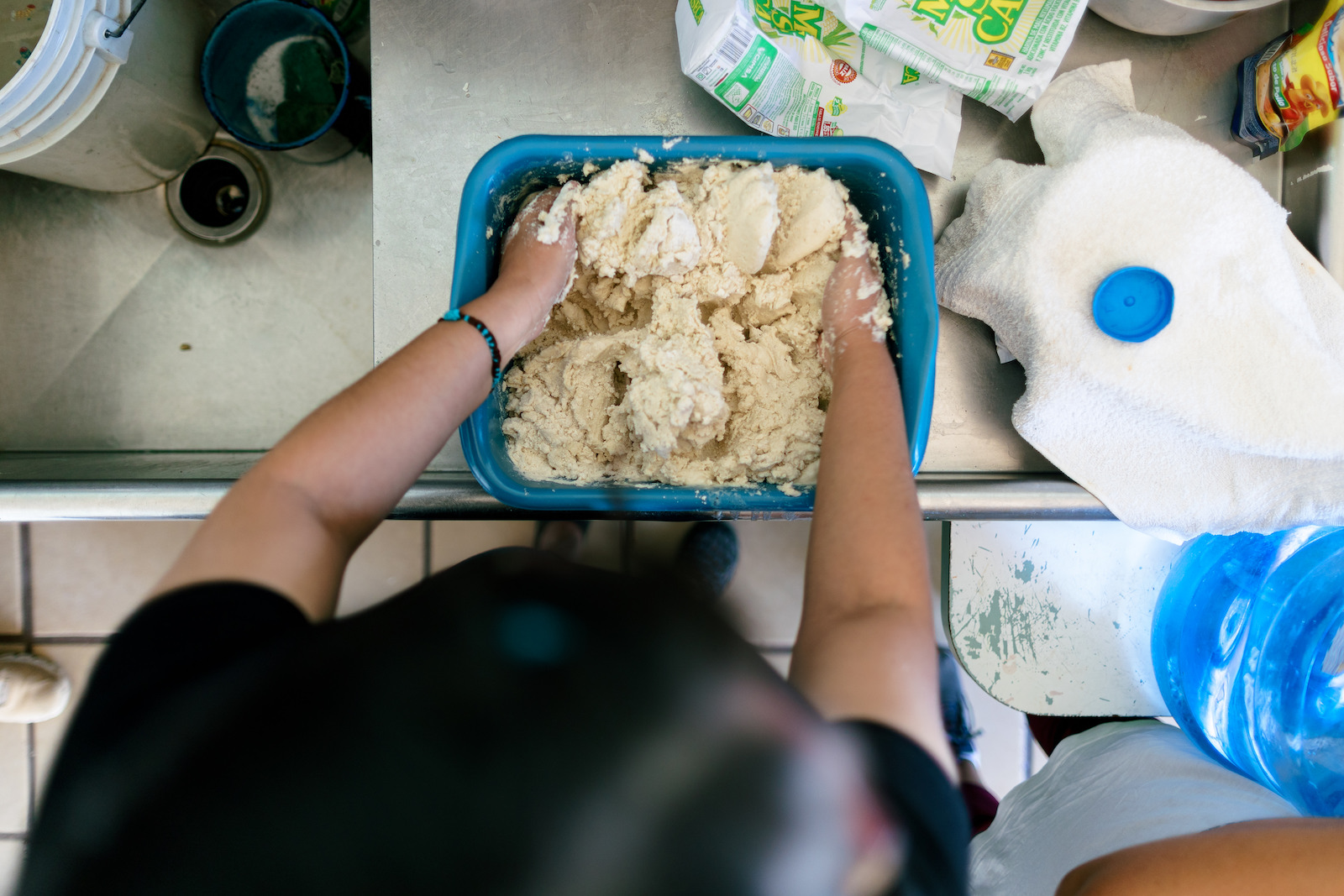
- For the corn dough, mix with water and a pinch of salt until you get a soft and moist dough, cover your dough while you continue with the recipe. It’s important that the dough is worked enough that it doesn’t stick to your hands.
- For the pickled cabbage, mix the cabbage, carrots, onion, a pinch of oregano, salt to taste, and half a cup of white vinegar. Let stand for 20 minutes.
- For the pickled cabbage with mayonnaise, just stir the ingredients together and if necessary add more mayonnaise to your liking.
- For the salsa, blend all the ingredients, adding water little by little until you get an adequate consistency. Then, put the salsa in a pan with a tablespoon or so of oil, in medium heat, stirring it until it boils. If the salsa is a little bit acidic, add sugar as needed.
- Next, we make the pupusas. Take a portion of the dough and scoop it out with your hands. Press into the dough ball until it is very flat and fits into the palm of your hand. Scoop the cheese onto the flat side of the dough circle. Next, press the beans into the cheese and the dough, making sure the beans and cheese are combined well. Take the sides of the dough and fold them up, ripping off the excess dough. Roll the dough into a ball. Then, slowly pat it into a flat, found circle. This is the most important step. Keep patting it flat with your hands. Then, cook the pupusas on a hot griddle, listening for the sizzles. Keep flipping the pupusa every two minutes until each side is golden brown.
- Garnish with pickled cabbage and salsa. Enjoy!
